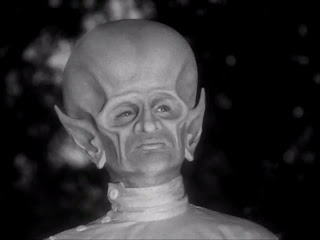
Posted on 05/17/2023 12:41:55 PM PDT by Red Badger

Scientists are conducting a long-term experiment on evolution in the lab, to investigate how single-celled organisms could evolve into multicellular lifeforms. After thousands of generations, their yeast grew 20,000 times bigger and 10,000 times tougher.
The idea of an evolutionary “missing link” usually conjures images of a hairy ape-like hominid, but there are actually much more profound missing links in the chain. One of the biggest gaps sits between single-celled and multicellular organisms, which marks a key step in the development of complex life on Earth.
Now, scientists from Georgia Tech have reported the first results of an experiment that they hope to continue running for decades, with a pretty lofty goal – evolving single-celled lifeforms into brand new multicellular lifeforms. Directed evolution experiments have been conducted for decades, even winning the Nobel Prize for Chemistry in 2018, but those are usually focused on making new drugs or solving other problems, not plugging holes in our distant family tree.
In this first phase of this Multicellularity Long-Term Evolution Experiment (MuLTEE), the researchers started with a species called snowflake yeast. The microbes were grown in shaking incubators, and every day the team would engage in a spot of artificial natural selection – colonies that had grown the fastest and reached the biggest sizes were selected for further cultivation. Repeat this process thousands of times over, and you’ve got a pretty good approximation of the environmental forces that favor certain characteristics in natural evolution.
And sure enough, after about 3,000 generations, the yeast had evolved to form clusters of more than 500,000 cells – more than 20,000 times larger than the original strain. In the process they’d become visible to the naked eye, and had become around 10,000 times tougher, on par with wood.
(Excerpt) Read more at newatlas.com ...
Good way to examine gene function.
Won’t tell anything about what this article says.
Ok,... loss of information. Completely meaningless for the purpose of determining how life can gain complexity.
“the yeast had evolved to form clusters of more than 500,000 cells”
Yet, a cluster is still not a multi-cellular organism. So their experiment was a failure. They’re just spinning it to keep the grant money flowing.
“Get your own dirt!”
yeah. not evolution. adaptation of a sort.
the sad thing is that a corrupt gov’t bureaucrat (like faschi) is giving them our tax money to do this nonsense and lie about it.
Imagine a yeast infection with this crap.
Did it get up and start walking around?
Very cool process. It's all about giving the yeast enough food, oxygen, Ph, and perfect temperature. The strains are proprietary and guarded like gold in a vault.
Well, they have abandoned the original Darwinian hypothesis of natural selection and random mutation alone creating a gradual diversification of life. They don’t necessarily like to advertise that to the public very often, or teach it to students in lower level courses, but they abandoned that like 6 decades ago.
Now there are various competing models, like Stephen Gould’s “punctuated evolution”, or Lynn Margulis’ symbiotic theory of evolution that seek to keep the pure materialistic nature of Darwin’s theory while trying to plug up some of the most glaring holes.
Yeast is all about something to eat, a dark, warm, oxygen rich place to grow - reproduce. Yeast can sit idle for years, but when conditions are favorable, explode like a yeast version of C4.
Well, it’s yeast, so I imagine we get a really big tube of Vagisil...

The Outer Limits
But you really have to start with no yeast, right? Just water and lava or something.
I mean, if you want to be scientific about it.
They are building ‘cities’......................

Star Trek..................
Agreed.
I’ve attended workshops on microscopic evaluation of wine and evaluating various yeast strains.
Same thing with beer when I was in Belgium. The phenolic compounds generated by various yeasts, when combined with the various adjunct grains can produce some really wild flavors.
I personally get a headache from the alcohol made from rice, whether in Sake or beer, due to the phenolic compounds.
Directed evolution requires a director. In this case, it seems that human direction ended up with yeast-wood.
All this proves is that it takes intelligent intervention to create an environment where yeast could become stronger and larger. Without that guidance, things fall apart. Entropy...
If a human chooses the mutations, is that really “natural selection”?
Unwittingly they just proved intelligent design.
Disclaimer: Opinions posted on Free Republic are those of the individual posters and do not necessarily represent the opinion of Free Republic or its management. All materials posted herein are protected by copyright law and the exemption for fair use of copyrighted works.